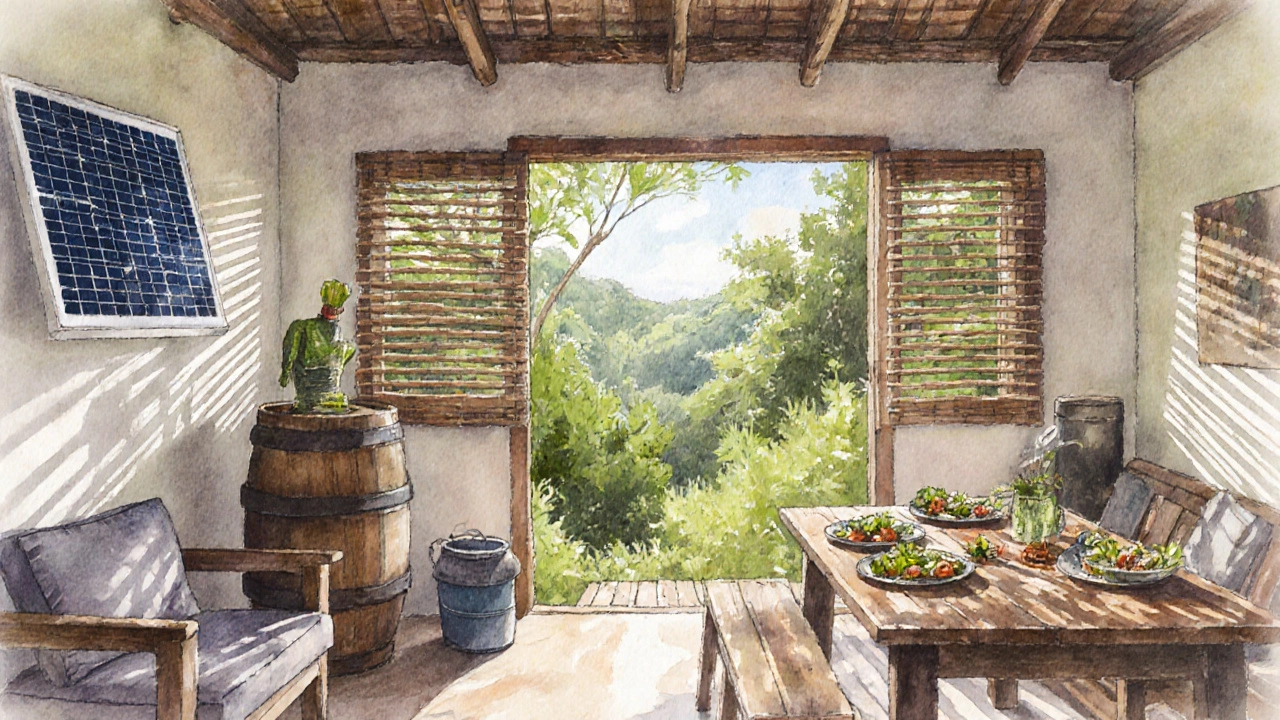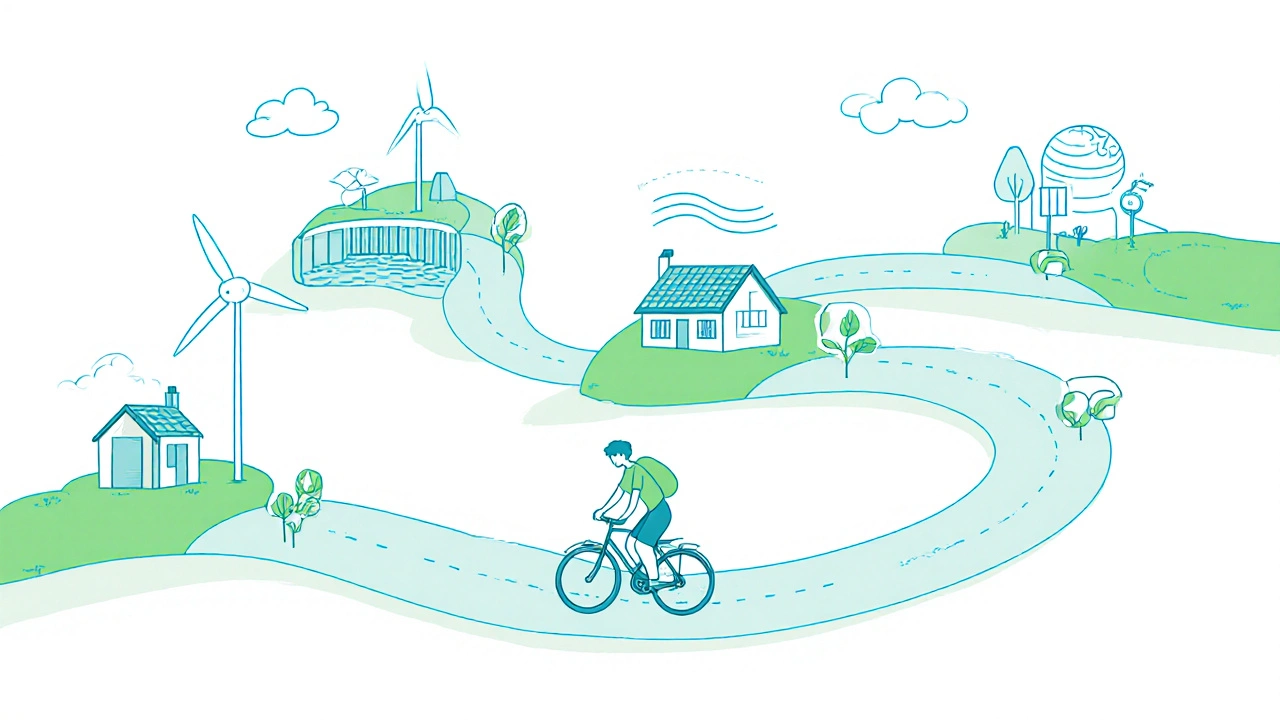Ever wondered where you can truly unplug, breathe clean air, and know your stay isn’t hurting the planet? Below you’ll find the world’s most eco‑friendly places, what makes them tick, and how you can travel responsibly without sacrificing comfort.
Quick Takeaways
- Look for renewable‑energy grids, zero‑waste policies, and community‑led conservation.
- Top destinations: Iceland’s Westfjords, Bhutan, CostaRica’s Osa Peninsula, NewZealand’s South Island, and Norway’s Lofoten Islands.
- Many spots feature eco‑friendly cottages that run on solar, use grey‑water recycling, and source food locally.
- Travel light, support local artisans, and offset any unavoidable carbon emissions.
- Use our checklist at the end to verify a location’s sustainability claims.
Defining an Eco‑Friendly Place
Eco‑Friendly Destination is a location that prioritizes renewable energy, minimal waste, biodiversity protection, and community empowerment. In practice, that means the local power grid runs at least 50% on wind, solar, or hydro, hotels and cottages operate with carbon‑neutral or carbon‑negative footprints, and tourism revenue directly funds conservation projects.
These places also score high on the LEED or BREEAM certification scales, showing that building standards meet rigorous environmental criteria.

How to Spot Genuine Sustainability
- Energy Mix: Verify the percentage of renewable energy in the local grid. Islands that rely on geothermal or hydro are a strong sign.
- Waste Management: Look for zero‑waste policies, on‑site composting, and strict recycling requirements for visitors.
- Local Food Systems: Places that source 80%+ of meals from nearby farms reduce transport emissions.
- Conservation Funding: Tourist fees that go toward preserving wildlife habitats or reforestation projects.
- Community Involvement: When locals own and run eco‑lodges, the economic benefit stays home, promoting cultural preservation.
Top 5 Eco‑Friendly Destinations in 2025
Below is a snapshot of the five places that consistently outperform on all sustainability metrics.
| Destination | Renewable Energy % | Waste Policy | Key Conservation Effort | Notable Eco‑Cottage Example |
|---|---|---|---|---|
| Iceland - Westfjords | 94% | Zero‑landfill, mandatory recycling | Atlantic puffin sanctuary | Solar‑Steep Cottage |
| Bhutan | 71% (hydro‑dominated) | Compost‑first, ban on single‑use plastics | High‑altitude cloud forest protection | Thimphu Green Lodge |
| Costa Rica - Osa Peninsula | 68% (solar & wind) | Zero‑waste resort policy | Jaguar corridor restoration | Rainforest Eco‑Cabin |
| New Zealand - South Island | 62% (hydro + wind) | Level‑5 recycling, food waste composting | Kepler Track biodiversity monitoring | Māori‑Built Earth House |
| Norway - Lofoten Islands | 85% (hydro & tidal) | Plastic‑free beaches, community compost hubs | Arctic cod population sustainability | Tidal‑Powered Fjord Cabin |
What Makes These Spots Stand Out
Each of the five destinations excels in a blend of three pillars:
- Renewable Power: From Iceland’s geothermal fields to Norway’s tidal turbines, the energy footprint of visitor accommodations is minimal.
- Zero‑Waste Lifestyle: Communities enforce strict bans on single‑use plastics, and many cottages operate their own grey‑water treatment systems.
- Living Conservation: Tourist dollars fund real‑world projects-whether it’s protecting Bhutan’s sacred forests or re‑planting Costa Rica’s mangroves.
When you stay in an eco‑friendly cottage in these areas, you’re often staying in a structure built from locally sourced timber, insulated with sheep’s wool, and powered by a rooftop solar array that feeds excess energy back to the grid.
Staying Eco‑Friendly While Visiting
Even in the greenest spots, your choices matter. Follow these simple habits:
- Pack reusable containers, water bottles, and cloth bags.
- Choose public transport, bike rentals, or electric car shares.
- Eat at farm‑to‑table eateries that support local producers.
- Participate in on‑site sustainability workshops-many cottages offer tours of their solar roofs or rainwater harvesting systems.
- Offset remaining carbon emissions through certified programs that fund reforestation in the region you’re visiting.

Eco‑Travel Checklist
- Confirm the destination’s renewable‑energy percentage (≥50% is a good benchmark).
- Verify the accommodation’s waste policy-look for compost, recycling, and no‑single‑useplastic statements.
- Ask about local conservation contributions; reputable places publish impact reports.
- Check for certifications like LEED, BREEAM, or Iceland’s “Green Building” label.
- Bring a reusable travel kit (bottle, cutlery, shopping bag).
Frequently Asked Questions
What defines an eco‑friendly destination?
A location that blends high renewable‑energy use, strict waste reduction, local food sourcing, and tangible conservation funding into its tourism model.
Can I find eco‑friendly cottages in these places?
Yes. Most top destinations host a network of certified eco‑cottages that run on solar or wind power, feature rainwater harvesting, and use natural insulation like hemp or sheep’s wool.
How do I verify a cottage’s sustainability claims?
Look for third‑party certifications (LEED, BREEAM), read guest reviews that mention waste handling, and ask the host for energy‑use data. Transparent owners will share consumption logs.
Is it more expensive to stay in an eco‑friendly place?
Not necessarily. While some boutique eco‑lodges charge a premium, many community‑run cottages price comparable to traditional options, especially when you factor in the value of preserving the environment.
How can I offset my travel carbon footprint?
Purchase offsets from reputable programs that plant native trees or fund renewable‑energy projects in the same region you’re visiting. Verify that the program is certified by Gold Standard or Verra.
